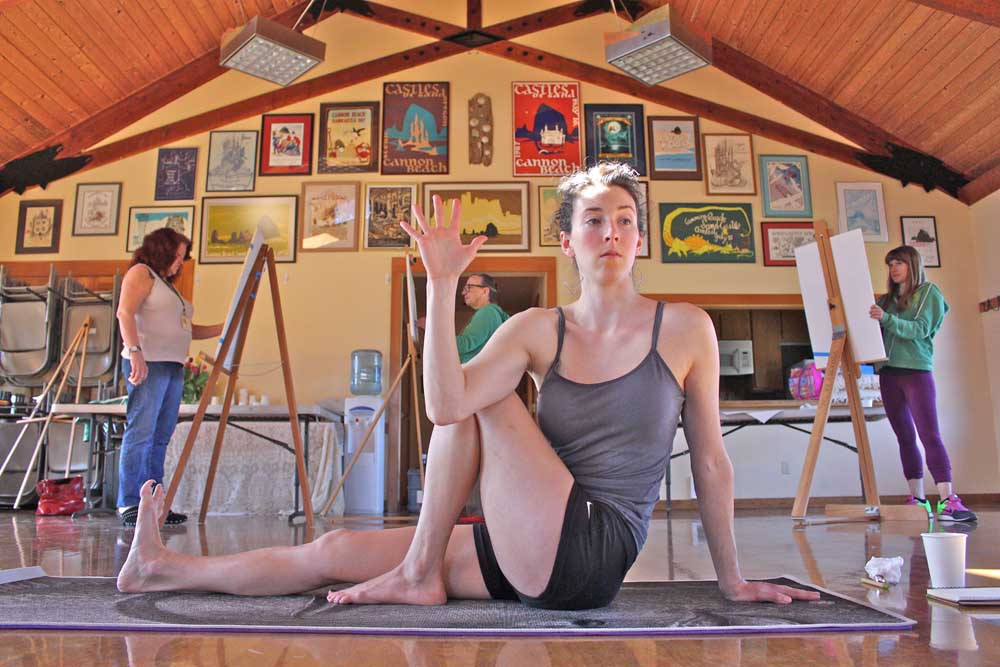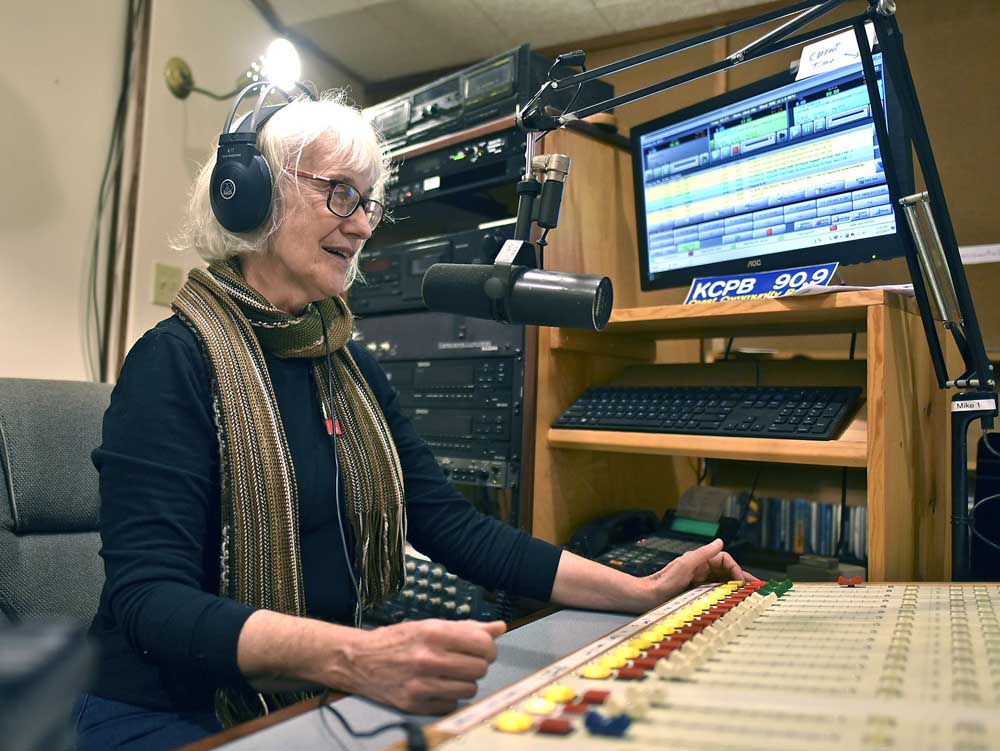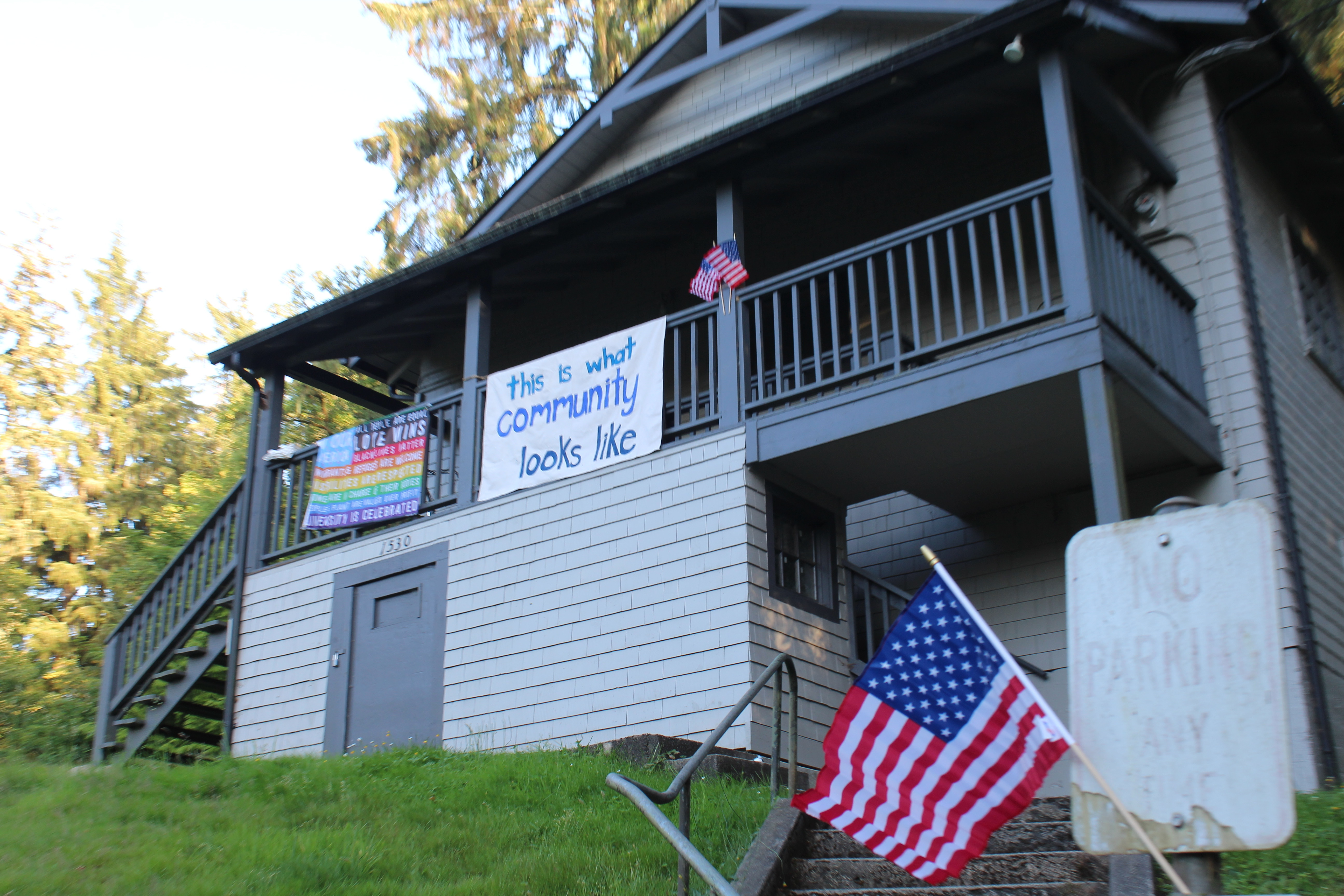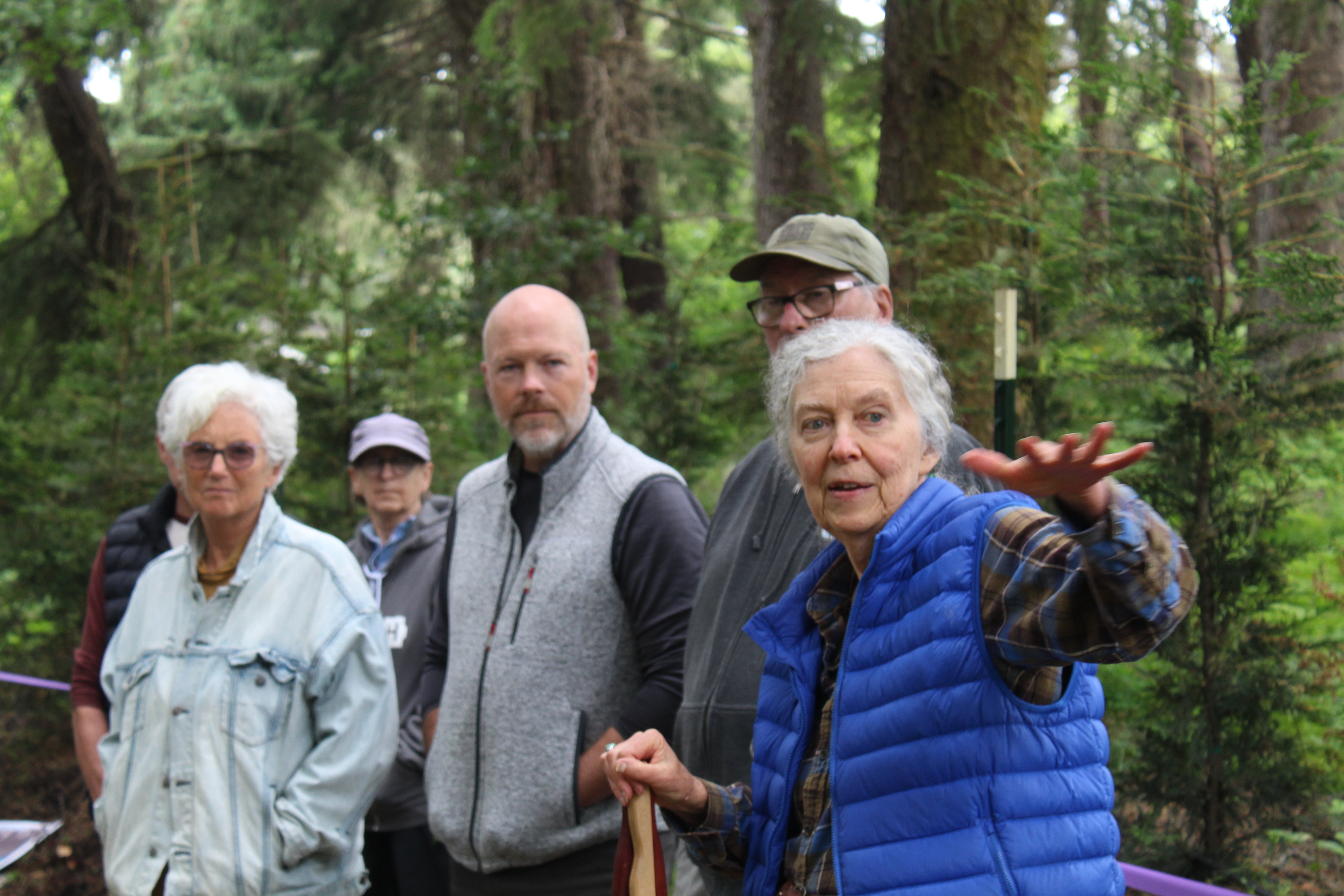Yoga festival teaches compassion, concentration
Published 8:00 pm Thursday, March 26, 2015

- Julie “Fig” Yanko, of Manzanita, models the Lord of the Fishes pose for a figure drawing class. Background from left: Rebecca Bliefernich, St. Helens; Linda Kinhan, Cannon Beach; and Sara Rieber, Portland.
CANNON BEACH — Sarahjoy Marsh’s workshop on compassion toward oneself and others — held the second day of the three-day Cannon Beach Yoga Festival — began somewhat paradoxically.
Trending
Sitting upright on blankets and yoga mats in the Cannon Beach Community Hall, the 33 attendees gave their first names and then uttered a noncompassionate word to characterized their lives or themselves.
The choices were revealing: “lame,” “shame,” “sadness,” “afraid,” “careless,” “failure,” “judgment,” “impatient,” “anxiety,” “defective,” “abandoned,” “unworthy,” “frustration,” “disrespect,” “rejection,” “jealousy,” “selfishness,” “shut down” and so on. When her turn came, Marsh said, “unkind.”
“That’s a relatively cruel perspective to have on ourselves,” she said. “First of all, it’s fundamentally not true. And secondly, it doesn’t leave a lot of room for growth or radiance to flower.”
Trending
Over the next two hours, Marsh, a yoga teacher and yoga therapist from Portland, discussed yoga-based practices to reach higher states of compassion. Singing long, deep notes is one such practice, she said.
Marsh led the group, call-and-response-style, through a vowel-laden Sanskrit mantra meant to induce a healing trance. It translates to: “May we practice together in a way that is effective and strong and produces luminous outcomes. May we not feel impatient with ourselves or each other in the process,” she said.
One benefit of singing in Sanskrit: “We’re also not likely to be singing about how the dog died and the boyfriend left and the house burned down — the painful heartache songs,” she said.
“We hunger for compassion. We crave it. We benefit from it. We long to know how to express it more consistently, more effectively,” she said. Unfortunately, “we don’t have a particularly compassionate culture,” which she described as a “very competitive, materialistic, consumeristic culture, rife with anxiety and depression” and consequent physical disorders.
Positioned in the wide-legged forward bend (also known as the prasarita padottanasana), the group meditated on compassion. Then, in the downward-facing dog pose, they imagined dissolving the tension caused by their own noncompassionate word and “the story about feeling lame or ashamed.”
“We can apply compassion to the pain we’re causing ourselves. … That’s one of the pathways out,” she said. “If you apply cruelty to cruelty, you won’t get out. You just go further in.”
In the back of the hall sat Gina Leon, of Portland, a Yoga Festival first-timer.
“The whole conference has been very powerful and positive … and emotional, too,” said Leon, who also attended Marsh’s workshop at the Surfsand Resort the day before.
Leon, who works in banking and may undergo a career change, found the festival “very helpful in processing lots of thoughts and feelings.”
Sara “Senna” Scott, of Redmond, sat near the front. The Saturday class wasn’t just Scott’s first yoga class at the festival; it was her first yoga class ever.
“I had self-doubts about singing,” she said. “It was interesting how negativity kind of just came about while I was practicing. And just being able to actually practice it, and have the support and love of everyone else in the room — it was really incredible.”
At moments, Marsh asked her listeners — the unsure beginners and the seasoned yogis — to park their thinking mind somewhere in their body. And, when their mind wandered, to coax it back to the here and now, even if it was only to pay attention to the sensations on their fingertips, or of their bare skin against the cool air.
Though mindfulness meditation lies at the heart of yoga practice, one need not necessarily assume the lotus position while om-ing in order to have a meditative experience. Making art, for example, can be just as rich and rewarding, and can produce a similar effect.
Before Marsh’s workshop, the community hall served as a temporary art studio, where Cannon Beach artist and teacher David Kinhan taught a yoga figure drawing class.
Using charcoal sticks and a canvas, five amateur artists sketched the lithe, flexible frame of Julie “Fig” Yanko, a professional model and yoga practitioner from Manzanita.
Yanko, wearing skin-tight gym wear, rotated her angular body through different yoga poses on two layers of yoga mat, sometimes holding a pose for 10 minutes or more. Meanwhile, Kinhan circled the room, moving from student to student, pointing out the shapes, contours, proportions and musculature of Yanko’s body, and the negative space around it.
The human form is “one of the hardest things that there is to draw,” even in a state of natural repose, Kinhan said. Drawing it in complicated yoga poses requires even greater concentration.
“This particular type of drawing is like a yoga practice,” said Kinhan, the younger brother of yoga festival founder and director Christen Allsop. “I tell people that the whole point of this class is not necessarily to make beautiful drawings that you’re going to put in a frame and give to your mother. It’s for you. It’s for you to learn how to draw.”
While drawing, “you’re focusing on one thing for a certain period of time,” said Sara Rieber, a festival volunteer from Portland who took Kinhan’s class. “You get into a whole other world. You forget about your surroundings, which is exactly what yoga’s supposed to be like.”
Now in its fifth consecutive year, the yoga festival, held March 6 through 8 this year, typically brings between 150 and 200 yoga enthusiasts to Cannon Beach. These include world-renowned yoga instructors, like Marsh, who give classes, workshops, presentations and lectures at different locations throughout town. The 2015 festival had just under 200 participants, according to an early tally by Allsop, owner of Cannon Beach Yoga Arts.
The festival receives money from the city’s Tourism and Arts Commission, which collects a portion of the city’s overnight lodging taxes. To get funding, event organizers have to show that their event attracts visitors from more than 50 miles away and contributes to the city’s arts scene. This year’s yoga festival grant was for $36,000.
Rebecca Bliefernich, a St. Helens resident and friend of Allsop, has attended the festival every year, and this year marked the second time she has taken Kinhan’s class. As Kinhan called it a day, and Yanko prepared for Marsh’s workshop, Bliefernich, a painter, shared why yoga appeals to her.
“Everybody does yoga for a different reason,” she said. “For some people, it’s internal; other people, external. For me, it’s visual.”
Watching Yanko — whose yoga posture represents “the ideal,” and whose “trueness of line” embodies what many yoga practitioners hope to achieve — “It makes me appreciate what yoga’s supposed to be,” Bliefernich said. “I will never have a yoga body. I will never have that trueness of line. But I can certainly appreciate it in other ways.”
We hunger for compassion. We crave it. We benefit from it.
— Sarahjoy Marsh
yoga instructor









